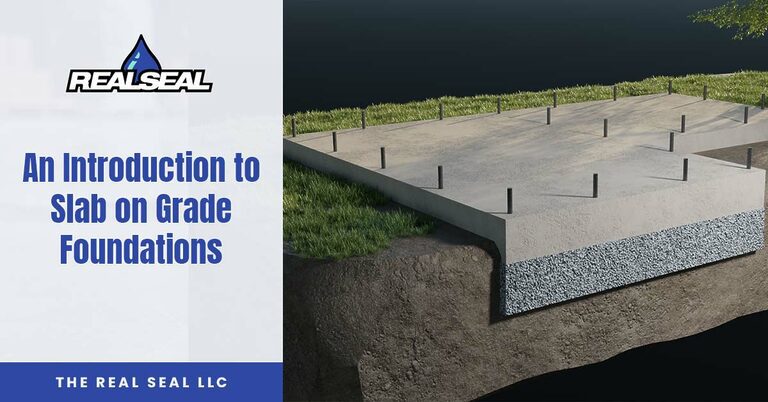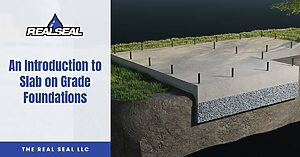Looking for information about slab-on-grade foundations? If so, don’t hit that back button because that’s what this article is about. We’ll review slab-on-grade foundations, the two types – monolithic and stem wall, the pros and cons of a slab-on-grade foundation, common problems, and more.
What Is a Slab-On-Grade Foundation?
A slab-on-grade foundation is a type of foundation commonly used in residential and small commercial construction. This type of foundation is essentially a concrete slab poured directly onto the ground without a basement or crawlspace. The foundation is typically reinforced with steel mesh or rebar to enhance strength and durability.
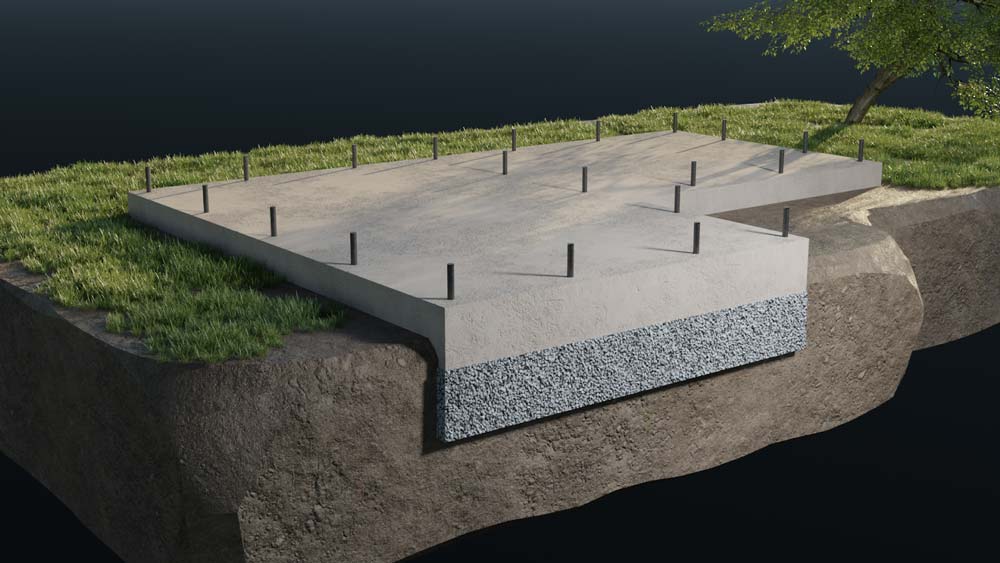
Pros of a slab-on-grade foundation
One of the main advantages of a slab-on-grade foundation is its cost-effectiveness. This type of foundation is generally less expensive than other foundations because it doesn’t require excavation.
A slab-on-grade foundation can also be constructed more quickly than basement or crawl space foundations.
Furthermore, the absence of crawl spaces or basements reduces the risk of moisture or water damage, which minimizes the risk of mold or mildew growth and maintains a healthy living environment.
Slab-on-grade foundations are also a low-maintenance option for homeowners. With no crawl spaces or basements to deal with, there are fewer areas to inspect. This also means less potential for maintenance issues, saving on maintenance costs over time.
Another advantage of a slab-on-grade foundation is its energy efficiency. Because the foundation is located at ground level, it can help to regulate the temperature of the building throughout the year. In colder climates, the foundation’s thermal mass can help retain heat, while in warmer climates, the foundation can help keep the building cool. This can result in lower energy bills and a more comfortable living or working environment.
Cons of a slab on grade foundation
While slab-on-grade foundations may be a popular choice for construction due to their simplicity and relatively low cost, several disadvantages should be considered before making a final decision.
Slab-on-grade foundations are vulnerable to cracking and other damage caused by changes in soil moisture levels and temperature (freeze-thaw cycle). This can lead to structural problems, which can be costly and time-consuming to repair.
Slab-on-grade foundations are unsuitable for areas with high water tables or flood-prone regions due to their low elevation. In these areas, raised foundations may be necessary for adequate protection against water damage.
It’s also worth noting that slab-on-grade foundations make it difficult to access the wiring or plumbing for repairs because these utilities are embedded within the slab. Repairs often require breaking up the slab, and that means an additional cost to put everything back together again.
Common Problems With Slab-On-Grade Foundations
Common issues with slab-on-grade foundations include differential settlement caused by expansive soil, erosion-prone soil, and poor construction practices.
So, what’s differential settlement?
After construction, a new house will settle very slightly into the ground. This usually isn’t a problem as long as the settlement is uniform. Problems arise when the settlement is differential. The best way to explain this is via an illustration:
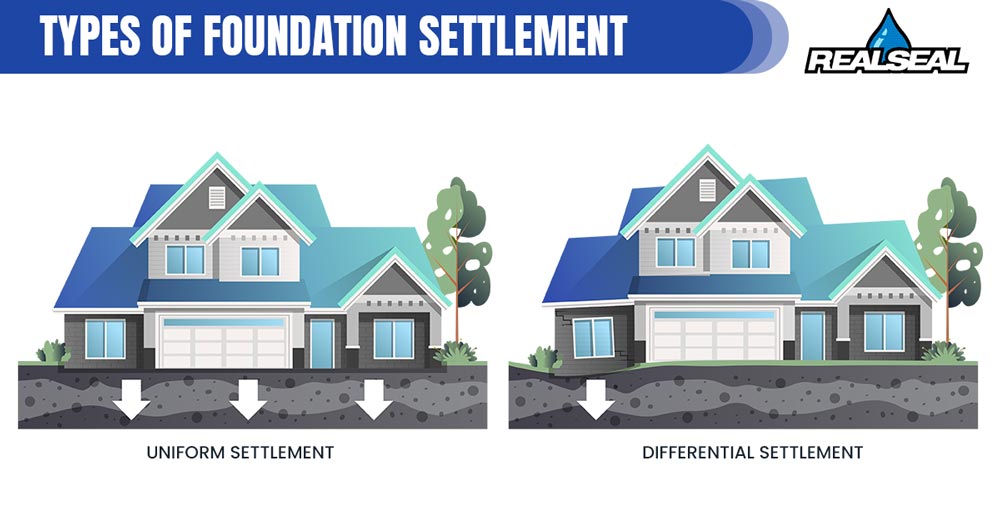
As you can imagine, differential settlement places a lot of stress on a foundation and will cause severe structural damage if it isn’t promptly corrected.
Signs of differential foundation settlement include the following:
- Doors and windows that don’t open and close properly
- Uneven floors
- Wall, floor, and ceiling cracks
- Stair step cracks in brick or masonry
- Gaps between the walls and the ceiling or floor
- Wrinkled or torn wallpaper (The wall behind the wallpaper might be cracked.)
- Chimneys and porches that are pulling away from the house
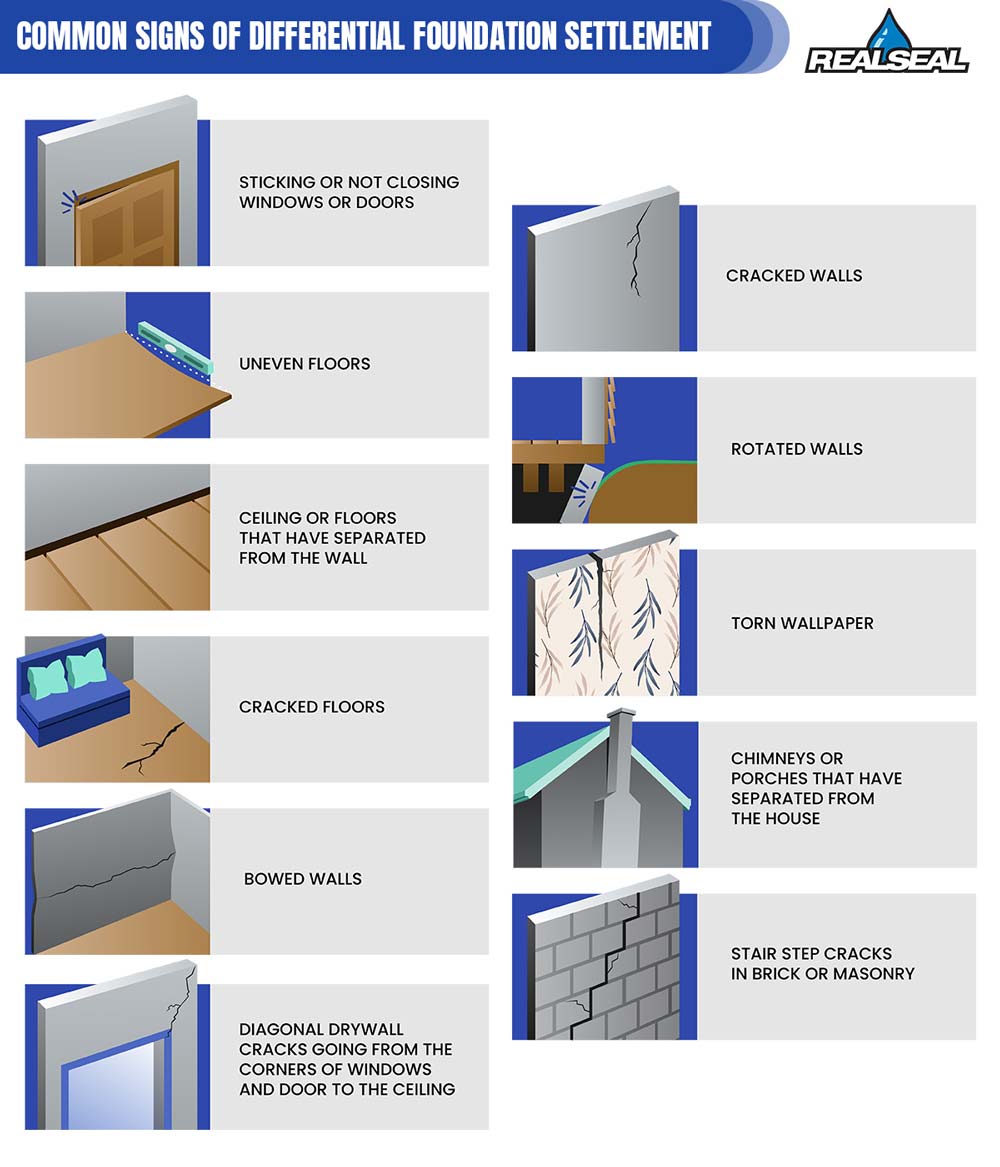
Various things, including the following cause differential settlement:
- Expansive soil – This is soil containing a high percentage of clay. It swells when it absorbs water and shrinks when it releases water and dries out. This back and forth, swelling and shrinking, causes movement under the foundation, and over time, this can lead to differential settlement.
- Erosion-prone soil – Other types of soil are prone to erosion. As the soil washes away under the foundation, voids are created. If the foundation settles into the voids, differential settlement could result.
- Poor construction practices – Soil needs to be compacted before construction. If this isn’t done correctly, the structure could settle unevenly later.
How to Help Prevent Problems With Your Slab-On-Grade Foundation
Fortunately, there are several preventative measures that homeowners can take to ensure the longevity and stability of their slab-on-grade foundation, or any foundation for that matter. Since most foundation problems are caused by water, most of these measures involve controlling groundwater around the foundation:
- If necessary, regrade the yard – Regrading a yard involves altering the slope of the land around a home’s foundation to direct water away from it. By doing this, homeowners can prevent water from accumulating around the foundation and potentially causing damage.
- Clean gutters regularly – Cleaning gutters is crucial in preventing foundation problems since clogged gutters can cause water to overflow and accumulate around the foundation, where it can cause trouble. It’s essential to clean them at least twice a year.
- Use downspout extensions – Installing downspout extensions is another way to prevent foundation problems. They should be added to existing downspouts to direct water at least 15 feet from the foundation before release.
- Install a drain tile system – Installing a drain tile system on the exterior of the foundation is a great way to prevent water from accumulating in the ground around the foundation. This involves installing a buried drainage pipe around the foundation’s perimeter at the footing level. Any excess moisture in the soil near the foundation will be directed through the system and away from the foundation.
- Keep trees away from the foundation – Tree roots can invade the ground under the foundation and cause a lot of damage. It’s important to plant trees at least 15 feet away from the foundation to prevent this from happening.
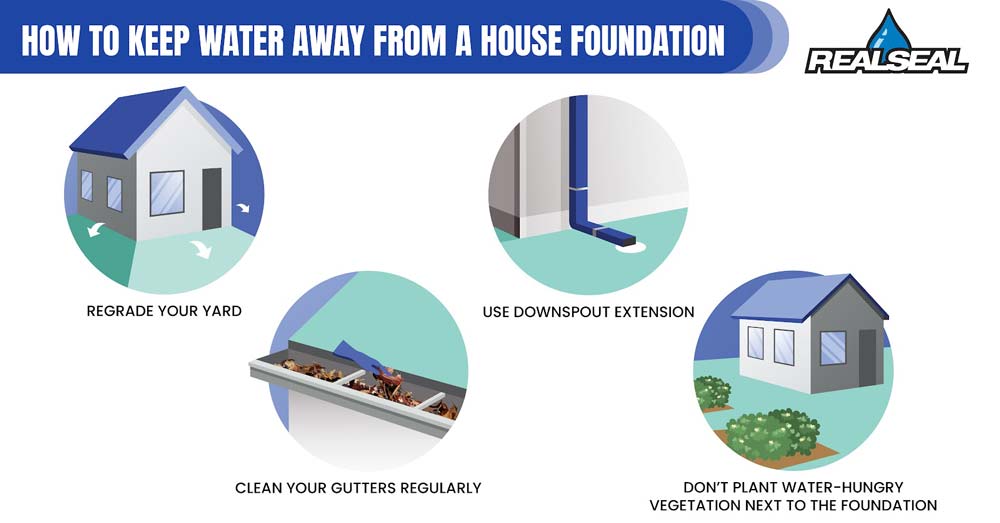
If you’re concerned there might be a problem with your Chicagoland home’s slab-on-grade foundation, contact The Real Seal today to schedule an evaluation and receive a repair estimate.
